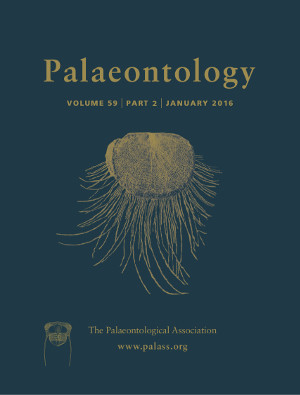Reg. Charity No. 1168330

Quantitative analysis of the distribution of dispersed spores and pollen (sporomorphs) has been used to assess temporal floral variation through the Middle Jurassic Ravenscar Group (Aalenian–Bathonian), North Yorkshire, UK. Aalenian, Bajocian and Bathonian strata possess relatively distinct sporomorph and palynofacies assemblages, which potentially reflect a dynamic history regarding the nature of parent vegetation. Specifically, Aalenian palynofloras are composed of a heterogeneous mixture of conifers, ferns, simple monosulcate pollen producers, sphenophytes and Caytoniales; Bajocian palynofloras are codominated by conifers and ferns; and Bathonian palynofloras are highly rich and contain assemblages of abundant ferns, conifers, lycophytes, pteridosperms/conifers and Caytoniales. Individual‐ and sample‐based rarefaction demonstrates that Bathonian samples are richer than Aalenian and Bajocian samples. Temporal variations in assemblages are a result of long‐term depositional and possible climatic fluctuations through the Middle Jurassic. Ordinations of sporomorph data using non‐metric multidimensional scaling (NMDS) demonstrate that short‐term variations between samples are largely governed by taphonomic biases as a result of slight changes in depositional processes, which give rise to highly variable catchment areas that supply deposits with sporomorphs. Long‐term compositional changes are apparent in sporomorph assemblages regardless of lithology/local depositional environments, suggesting that long‐term variations are more substantial than short‐term variations and potentially include genuine regional temporal changes in parent vegetation. Relating sporomorph assemblages with their respective depositional environments and relative catchment area sizes using lithological and palynofacies information suggests that the basin interior was occupied by mostly low‐standing species and extrabasinal vegetation was dominated by coniferous taxa. Comparisons of the dispersed sporomorph and plant megafossil records indicate that both fossil assemblages reflect different aspects of the palaeoflora due to a multitude of taphonomic and ecological biases. Such biases include variation in sporomorph production levels, depositional environment and differential sporomorph and parent plant durability.